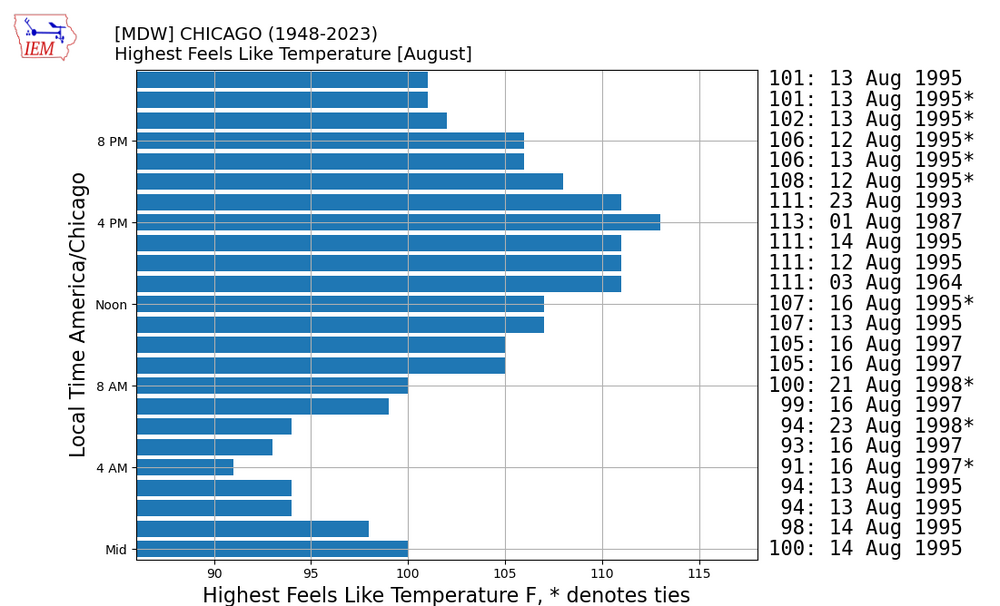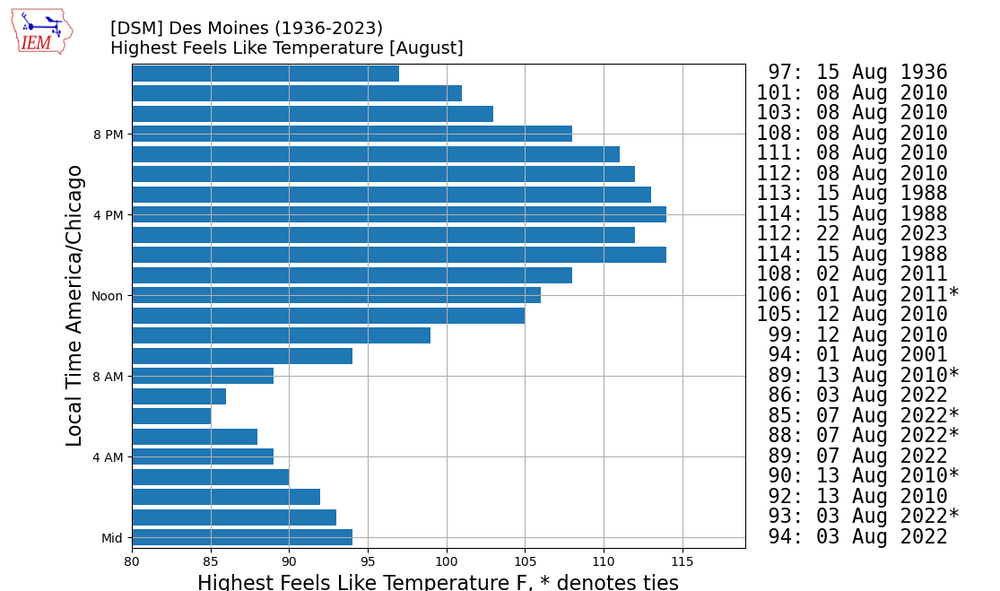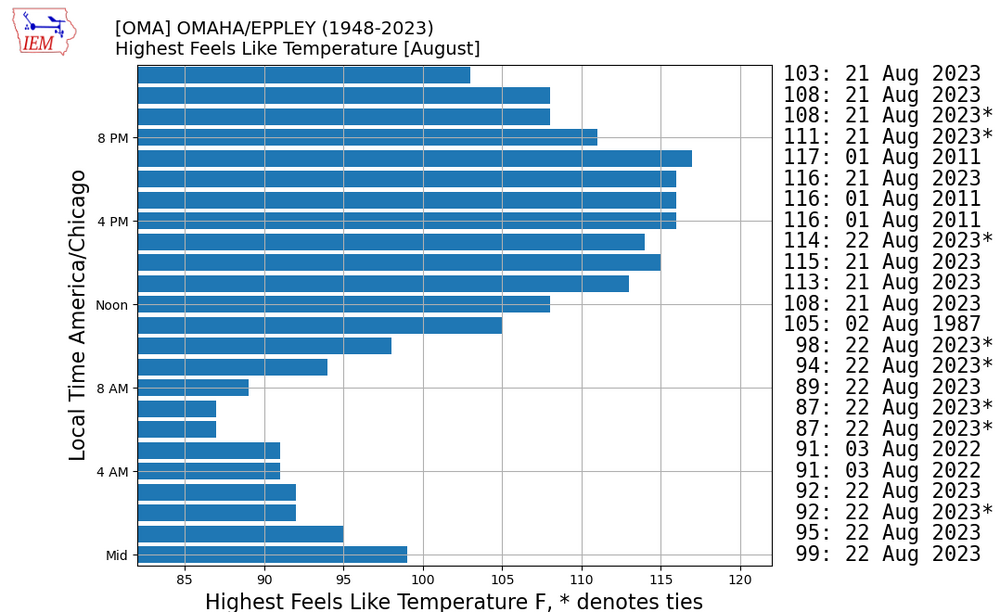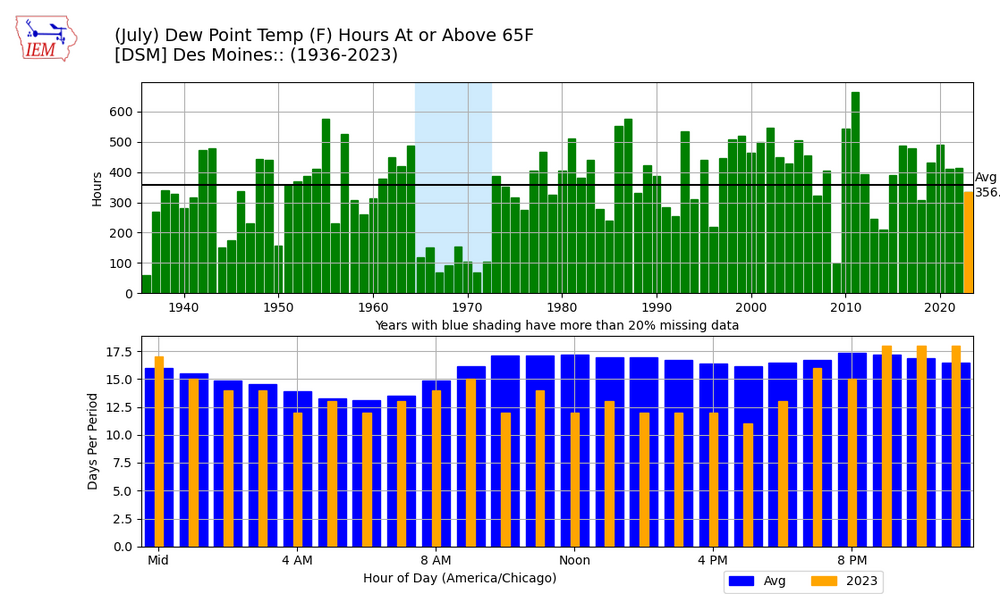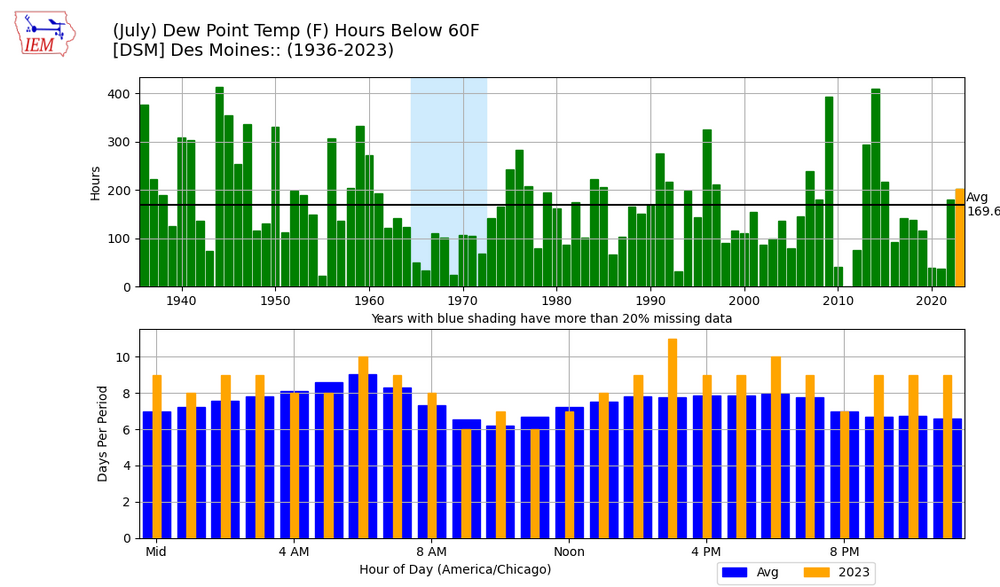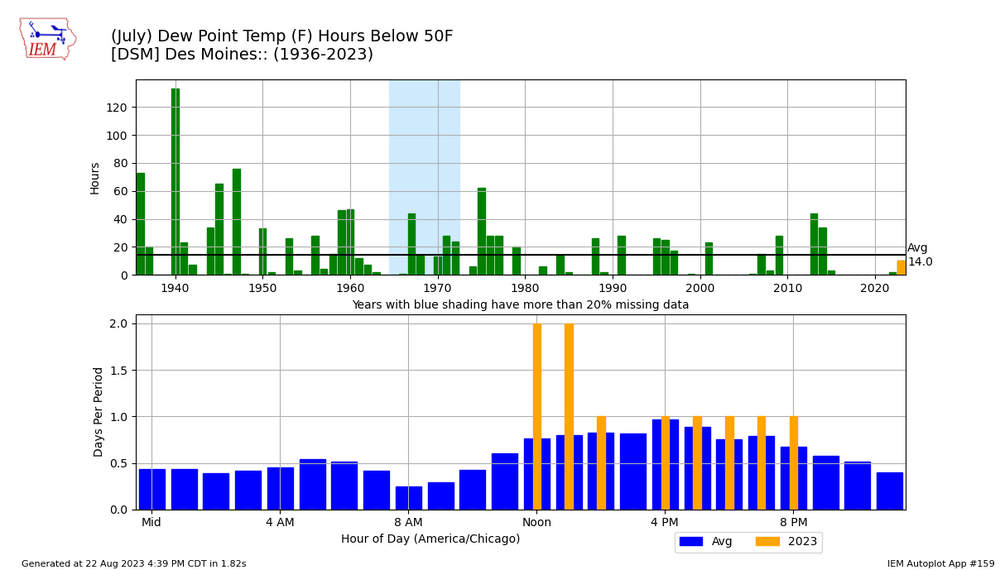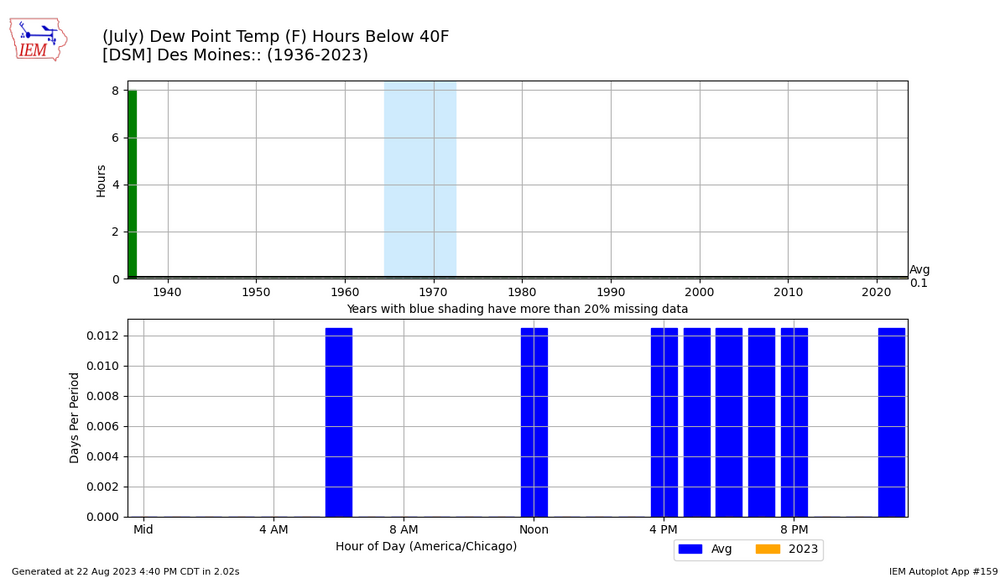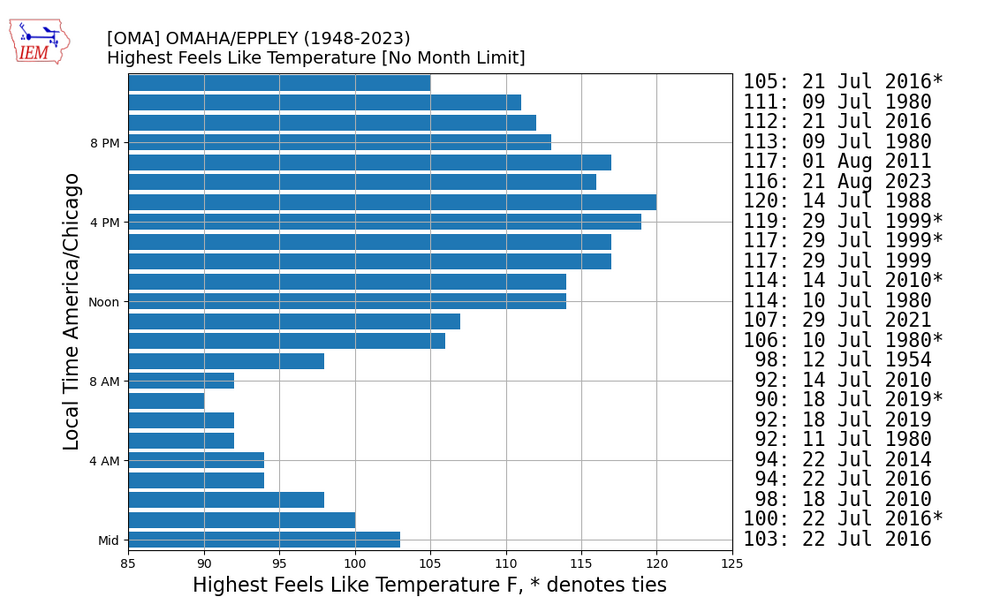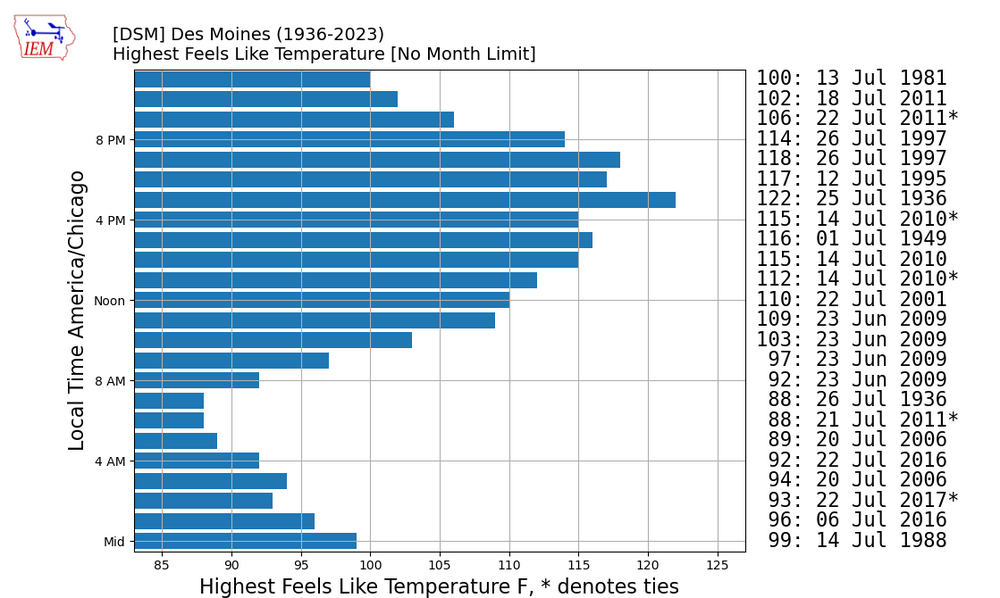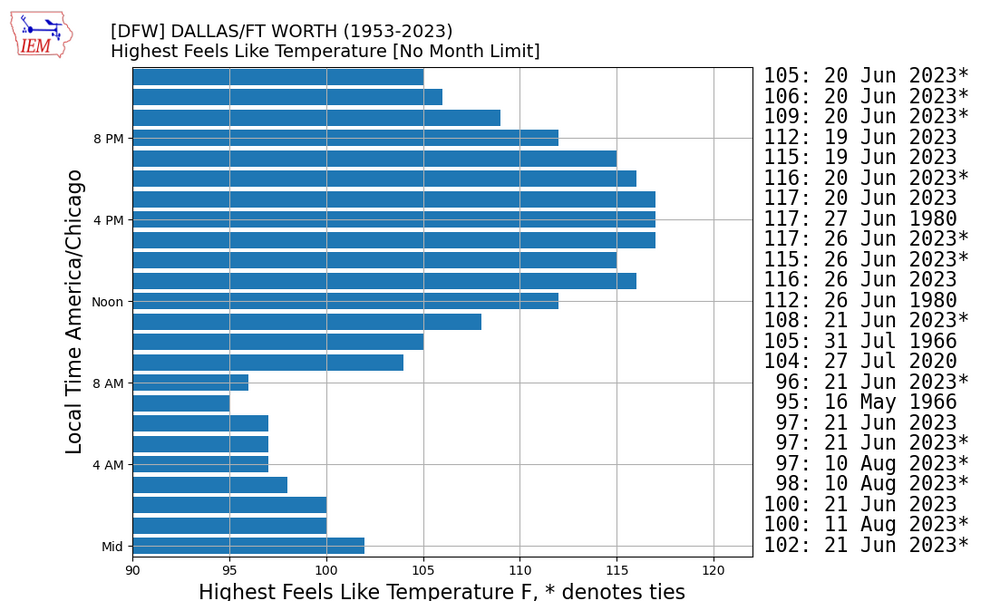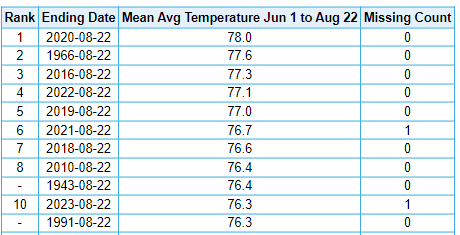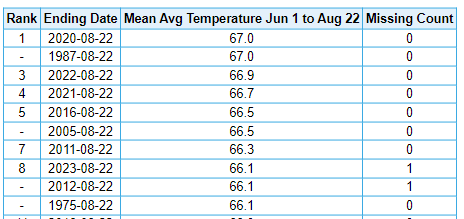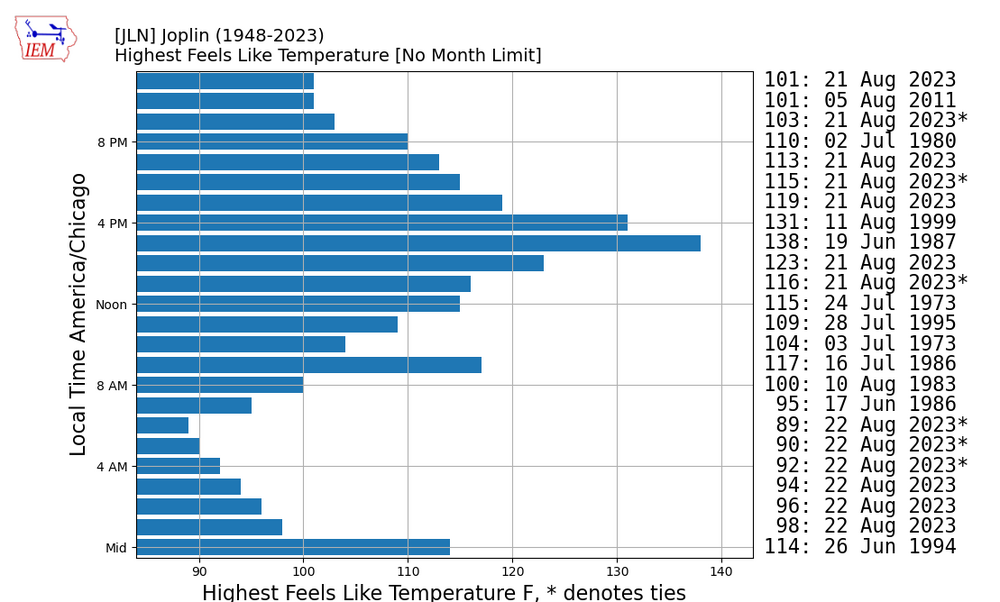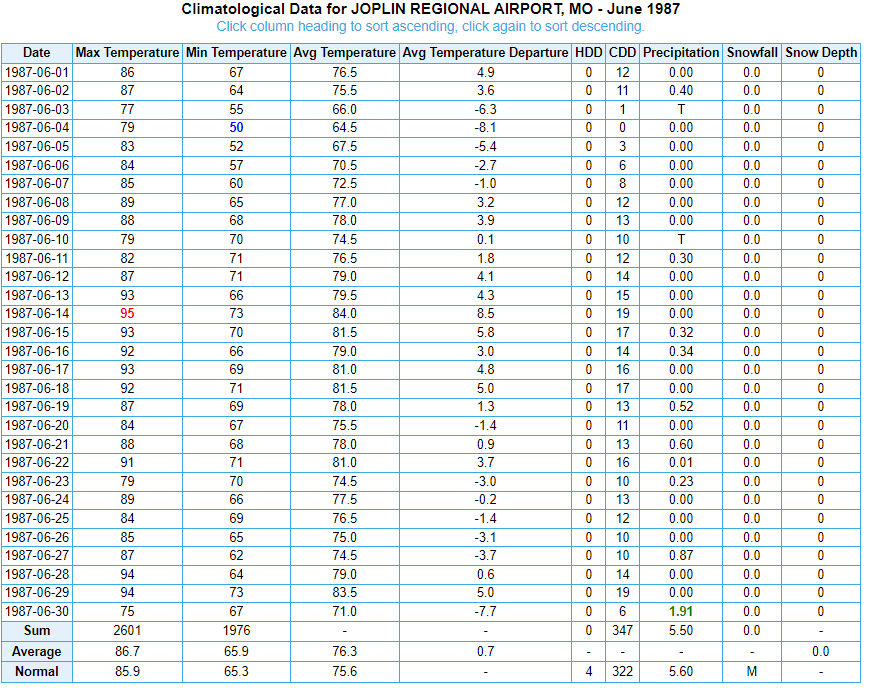
TheClimateChanger
Members-
Posts
4,080 -
Joined
-
Last visited
Content Type
Profiles
Blogs
Forums
American Weather
Media Demo
Store
Gallery
Everything posted by TheClimateChanger
-
August hourly heat index records at ORD (1946-present) and MDW (1948-present), per Iowa Environmental Mesonet data plotter (see below). Should be close to some of these numbers the next couple of days, although that 117F from 8/1/1953 is probably out of reach. ORD MDW
-
What's the wet bulb temperature looking like? I'm beginning to think large portions of the country will be uninhabitable during summer by later this century due to increasing heat and humidity. I've heard wet bulbs around 91-95F (33-35C) are around the limit of human survivability. I mean sure you can escape inside to the air conditioning (as long as it is working), but who is going to live in a place where an extended power outage in the summertime is potentially fatal?
-
The readings are converted from Celsius, but the 5 minute obs convert from rounded Celsius values. So the 98.6 is 37C, but the actual observed high was less than 36.9C.
-
Heat index reached 117F at Omaha’s Eppley Field at 7 pm, tying the monthly record also set at 7 pm on August 1, 2011. Point-click for OMA has 103 and 101 next two days. If dewpoints stay as elevated as they have been the past couple days, could see 120F. Des Moines peaked at 113F, one shy of the monthly record from August 15, 1988. And that goes all the way back to 1936. Point-click has temps of 101 & 98 at DSM next two days. Today’s high was 96F. Just multiple days of a record-breaking combination of heat and humidity for the month of August. The duration has to be a concern, especially for any unhoused persons.
-
I remember the 2001 heat episode. Killed Kory Stringer at Vikings practice.
-
Looks like the 114F heat index was a new monthly record at MSP airport.
-
Just 2023 doing 2023 things.
-
Interesting to see 1936 with so few heat index records at Des Moines, despite the extreme temperatures. Looking at the data, looks like it had the fewest hours of dewpoints at or above 65F of any year. Some of the years in the late 1960s to mid 1970s might be lower, but they are shaded in blue indicating more than 20% of the data is missing. The only other comparable year is 2009. Also, one of the most hours below 60F, behind only 1944, 2009 & 2014. Second most hours below 50F, behind only 1940. And heck there were more of those in July 1936 than there have been in the entire past decade. Also the only year to accrue any hours with a dewpoint below 40F - 8 of those to be exact.
-
Here are the August numbers for DSM and OMA: Des Moines - the 112F reading was the highest for the 3 o'clock hour. All-time record for the month is 114F, set on August 15, 1988, at 2pm and 4pm. A number of hourly maximum apparent temperatures were set just last year on the 3rd and 7th of the month. Omaha - easily the most impressive August heat on record, dating back to at least 1948. The 116F reading at 6 pm yesterday was one shy of the monthly record set on August 1, 2011, at 7 pm.
-
Here are some numbers to beat for the maximum observed heat index for each hour. Top is Omaha, and bottom is Des Moines. As you can see, the heat index of 116F at Omaha at 6 pm yesterday set a new record for that hour, and was just 4F below the all-time record of 120F, set on July 14, 1988 at 5 pm. The record heat index at Des Moines is 122F, on July 25, 1936, at 5 pm. No all-time hourly maxima have been set during the current heat wave so far.
-
Pittsburgh/Western PA Summer 2023
TheClimateChanger replied to Ahoff's topic in Upstate New York/Pennsylvania
These threaded records are so dumb for Pittsburgh, especially in the summer, when the variability is at a minimum. Summer to date is 34th warmest (of 71 years) at KPIT, so just above the median of all years observed at the International Airport. But in the threaded record, it is 43rd coldest (of 149 years) (or 102nd warmest, as there were a lot of years tied with it). Adding those 78 years, the ranking drops 68 places! In other words, 68 of the 78 years in the threaded record before PIT existed (from 1875-1952) were warmer than this summer. In the threaded record, it will look like a relatively cool summer at PIT. But in reality, it's actually slightly warmer than the long-term median when you correct for location & elevation of the airport. -
Wild. 19 of the 24 hourly heat index records at DFW (since 1953) have been set or tied during this year's relentless heat wave. The only other remaining years are 1966 (2), 1980 (2) and 2020 (1). Surprised the all-time record (well, since 1953) is only 117F at DFW. Really puts these 120F+ readings further north in perspective.
-
Central PA Summer 2023
TheClimateChanger replied to canderson's topic in Upstate New York/Pennsylvania
Not as highly ranked at the threaded stations with long periods of record, but certainly not cooler than average. IPT: 49th (of 129) in the threaded record, and 28th (of 79) at the airport. MDT: 34th (of 135) in the threaded record. Overall not a hot summer, no doubt, but I think it will still probably rank within the upper 1/3 of all years since 1895 statewide. So definitely not a cool summer either. -
Central PA Summer 2023
TheClimateChanger replied to canderson's topic in Upstate New York/Pennsylvania
-
Central PA Summer 2023
TheClimateChanger replied to canderson's topic in Upstate New York/Pennsylvania
8th warmest summer to date in Bradford, Pennsylvania, less than a degree below the record set in 1987 & 2020 (out of 64 years). -
Some context for the ongoing heat wave. Shared this in the Lakes & Ohio Valley forum, but feel it appropriate for here. Gives some insight into how the combination of heat and humidity are simply unprecedented over parts of the Plains states. I feel too much emphasis is placed on the temperature readings, with insufficient consideration on the dewpoint. 1936 had many extreme temperatures, but, by all accounts, humidity appears to have been exceptionally low during much of the heat wave. The heat today is different with dewpoints increasingly reaching into the 80s, and wet bulb temperatures creeping eerily close to levels which pose an extreme danger to life. I think the NWS should consider a third tier of heat alerts - an extreme heat emergency - for these future extreme wet bulb temperature events, where people are advised to shelter in a climate-controlled place, at least during the afternoons.
-
The 138F from June 19, 1987 has to be an error. The actual high was only 87F on that date (see below), so that heat index is not even close to being possible. The 131F from August 11, 1999 is possible - high was 104F on that date, although I'm thinking it must have been accompanied by a large, probably unrealistic dewpoint increase since there are no other records from that date.
-
Very impressive. Looks like 13 of the top hourly heat indices at Joplin, Missouri have been set or tied within the past 24 hours. Officially, the 125F heat index from yesterday was not the highest on record. But I'd say the readings from June 1987 and August 1999 are somewhat suspect, since there are no other hourly readings from those dates that were records. For that matter, the 117F at 9 am from 7/16/1986 is suspicious too. Regardless, one of the highest heat index readings on record. And certainly the most oppressive 24-hour period overall.
-
Do you mean exponential? In a logarithmic function, the increase in the dependent variable tails off over time (assuming time is your independent variable, as is the case here).
-
Nothing here, anyways: Past Seasonal Snowfall (weather.gov)
-
Central PA Summer 2023
TheClimateChanger replied to canderson's topic in Upstate New York/Pennsylvania
000SXUS71 KPBZ 212125RERDUJRECORD EVENT REPORTNATIONAL WEATHER SERVICE PITTSBURGH PA525 PM EDT MON AUG 21 2023...RECORD HIGH TEMPERATURE SET AT DUBOIS PA...A RECORD HIGH TEMPERATURE OF 87 WAS SET AT DUBOIS PA TODAY.THIS BREAKS THE OLD RECORD OF 86 SET IN 2020.$$WM -
-
Seeing a lot of air quality alerts in Minnesota. Is the smoke back?
-
Pittsburgh/Western PA Summer 2023
TheClimateChanger replied to Ahoff's topic in Upstate New York/Pennsylvania
Despite feeling rather fall-like, the daily mean was only one less than the normal daily mean. That’s the first below normal daily mean since August 2. Incredibly hard to go below normal when the low temperatures don’t drop below 65.

